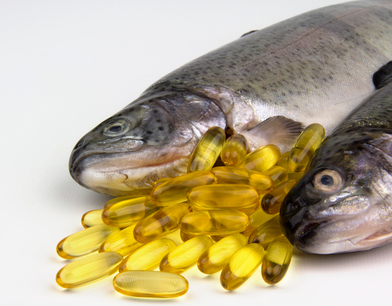Is it How Much You Eat, or How Much You Keep?
Author: Dr. Stephen Chaney
 Why do some studies conclude that omega-3 fatty acids are essential for a strong mind, a strong heart and will wipe out inflammation – while other studies suggest that they are ineffective? The simple answer is that nobody really knows.
Why do some studies conclude that omega-3 fatty acids are essential for a strong mind, a strong heart and will wipe out inflammation – while other studies suggest that they are ineffective? The simple answer is that nobody really knows.
However, in the process of reviewing two recent studies on omega-3 fatty acids and brain health I made an interesting observation that offers a possible explanation for the discrepancies between studies. And if my hypothesis is correct, it suggests that the design of many of the previous studies with omega-3 fatty acids is faulty.
Omega-3 Fatty Acids And Brain Health
The first study (J.K. Virtanen et al, J Am Heart Assoc, 2013, 2:e000305 doi: 10.1161/JAHA.113.000305) looked at the effect of omega-3 fatty acids on brain function in older adults (>65 years old). It concluded that high omega-3 levels were associated with better white matter grade and a 40% reduction in subclinical infarcts (Sorry for the technical jargon – but both of those are good things in terms of brain function for those of us who are getting a bit older).
The second study (C. M. Milte et al, J of Attention Disorders, 2013, doi: 10.1177/1087054713510562) looked at the effect of omega-3 fatty acids on children (ages 6-13) with ADHD. It concluded that high omega-3 levels were associated with improved spelling and attention and reduced oppositional behavior, hyperactivity, cognitive problems and inattention.
What Is The Common Thread In These Studies?
Why, you might ask, am I comparing a study in the elderly, where the concern is retention of cognitive skills, with a study on ADHD in children?
That’s because there is a very important common thread in those two studies. It wasn’t the amount of omega-3 fatty acids in their diet that counted. It was the levels of omega-3 fatty acids in their blood that made the difference.
The first study included a detailed dietary history to estimate the habitual intake of omega-3 fatty acids in the participants.
- There was no correlation between estimated dietary intake of omega-3 fatty acids and any measure of brain function in those older adults.
- However, there was a strong correlation between blood levels of omega-3s and brain health in that population group.
The second study was actually a placebo controlled intervention study in which the children were given 1 gm/day of either omega-3 fatty acids or omega-6 fatty acids.
- Once again, there was no correlation between dietary intake of omega-3 or omega-6 fatty acids and any outcome related to ADHD.
- However, there was a strong correlation between blood levels of omega-3 fatty acids or omega-3/omega-6 ratio and improvement in multiple measures of ADHD.
How Could The Effect of Dietary Intake And Blood Levels Of Omega-3s Be So Different?
 Both studies were relatively small and suffered from some technical limitations, but the most likely explanations are:
Both studies were relatively small and suffered from some technical limitations, but the most likely explanations are:
- Inaccurate recall of the participants as to what they eat on a habitual basis. (study 1)
- Individual differences in the ability of participants to convert short chain omega-3 fatty acids (found in foods such as canola oil, flaxseed oil and walnuts) to the beneficial long chain fatty acids (found in cold water fish). (study 1)
- Poor compliance in taking the supplements. (study 2)
Why Are These Studies Important?
The most important insight to come out of both of these studies is that it is essential to actually measure blood levels of omega-3 fatty acids and not just rely on dietary intake or supplementation for a valid clinical trial.
That’s a concern because blood measurements of omega-3 fatty acids are expensive and have not been a part of many of the clinical studies that have been performed to date. Even the largest, best designed clinical study is worthless if the dietary recalls aren’t accurate or people don’t take their capsules.
We need to go back and reevaluate many of the clinical studies that have been published.
We need to ask:
- Are their conclusions valid?
- Did some studies fail to show that omega-3s were effective simply because they only measured dietary intake and not how much of the omega-3s actually accumulated in the blood?
The Bottom Line
- High blood levels of omega-3s in the blood correlated with improved brain health in the elderly and reduced ADHD symptoms in children
- These studies were small, but they are consistent with a number of other studies that have come to similar conclusions.
- Blood levels of omega-3s are better predictors than dietary intake for evaluating the health benefits of omega-3 fatty acids.
- Many previous studies that failed to find an effect of omega-3 fatty acids on brain health, heart health or inflammation did not actually measure blood levels of the omega-3 fatty acids. These studies should be reevaluated.
These statements have not been evaluated by the Food and Drug Administration. This information is not intended to diagnose, treat, cure or prevent any disease.












